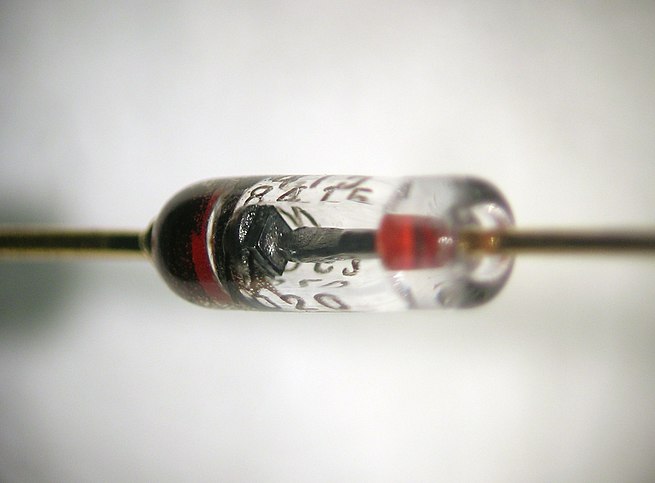Diodenoun
(electronics) An electronic device that allows current to flow in one direction only; used chiefly as a rectifier.
Diodenoun
a thermionic tube having two electrodes; used as a rectifier
Diodenoun
a semiconductor that consists of a p-n junction
Diode
A diode is a two-terminal electronic component that conducts current primarily in one direction (asymmetric conductance); it has low (ideally zero) resistance in one direction, and high (ideally infinite) resistance in the other. A diode vacuum tube or thermionic diode is a vacuum tube with two electrodes, a heated cathode and a plate, in which electrons can flow in only one direction, from cathode to plate.
Triodenoun
A thermionic valve containing an anode, a cathode, and a control grid; small changes to the charge on the grid control the flow from cathode to anode, which makes amplification possible.
Triodenoun
a thermionic vacuum tube having three electrodes; fluctuations of the charge on the grid control the flow from cathode to anode which making amplification possible
Triode
A triode is an electronic amplifying vacuum tube (or valve in British English) consisting of three electrodes inside an evacuated glass envelope: a heated filament or cathode, a grid, and a plate (anode). Developed from Lee De Forest's 1906 Audion, a partial vacuum tube that added a grid electrode to the thermionic diode (Fleming valve), the triode was the first practical electronic amplifier and the ancestor of other types of vacuum tubes such as the tetrode and pentode.












